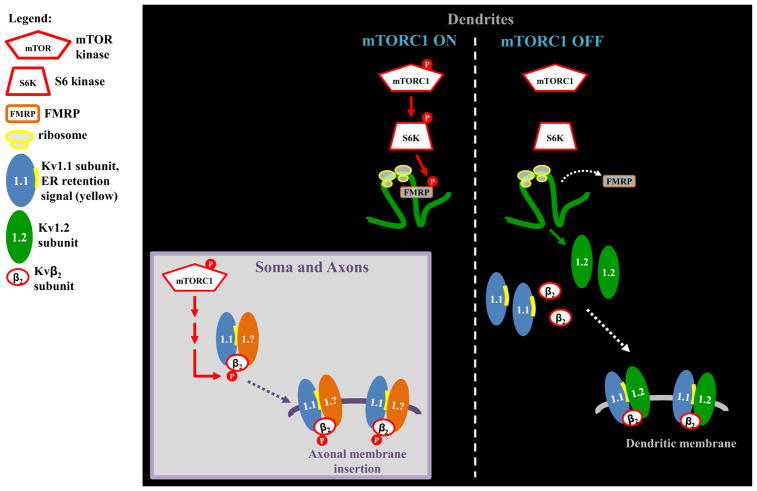Fig. 2.
Model of mTOR repression of Kv channel mRNAs. (Left) mTOR activity is ON. mTOR represses the mRNA translation of Kv1.1 and 1.2 via different RNA binding factors. Kv1.1 is repressed by the microRNA miR-129 (not shown) as reported in [88]. Kv1.2 (shown) and Kv4.2 mRNA (not shown but reported in [61]) may be repressed via mTOR dependent phosphorylation of S6 kinase which in turn phosphorylates FMRP. FMRP when phosphorylated binds to its target mRNAs, such as Kv1.2 and Kv4.2, to repress their translation. When mTOR is active, Kv1.1, and 1.2 are expressed in the soma where the axonal targeting domain in the amino terminus is exposed and binds to Kvβ2 targeting the channel complex to the axon [56,57]. When mTOR activity is reduced (right) FMRP is dephosphorylated and releases its target mRNAs. Kv1.1 mRNA is translated but must associate with Kv1.2 to mask its endoplasmic reticulum retention signal. Thus, the coordinated release of miR-129 from Kv1.1mRNA and FMRP from Kv1.2 mRNA allows for Kv1.1, Kv1.2 and Kvβ2 to form a functional channel and be inserted into the dendritic membrane.

